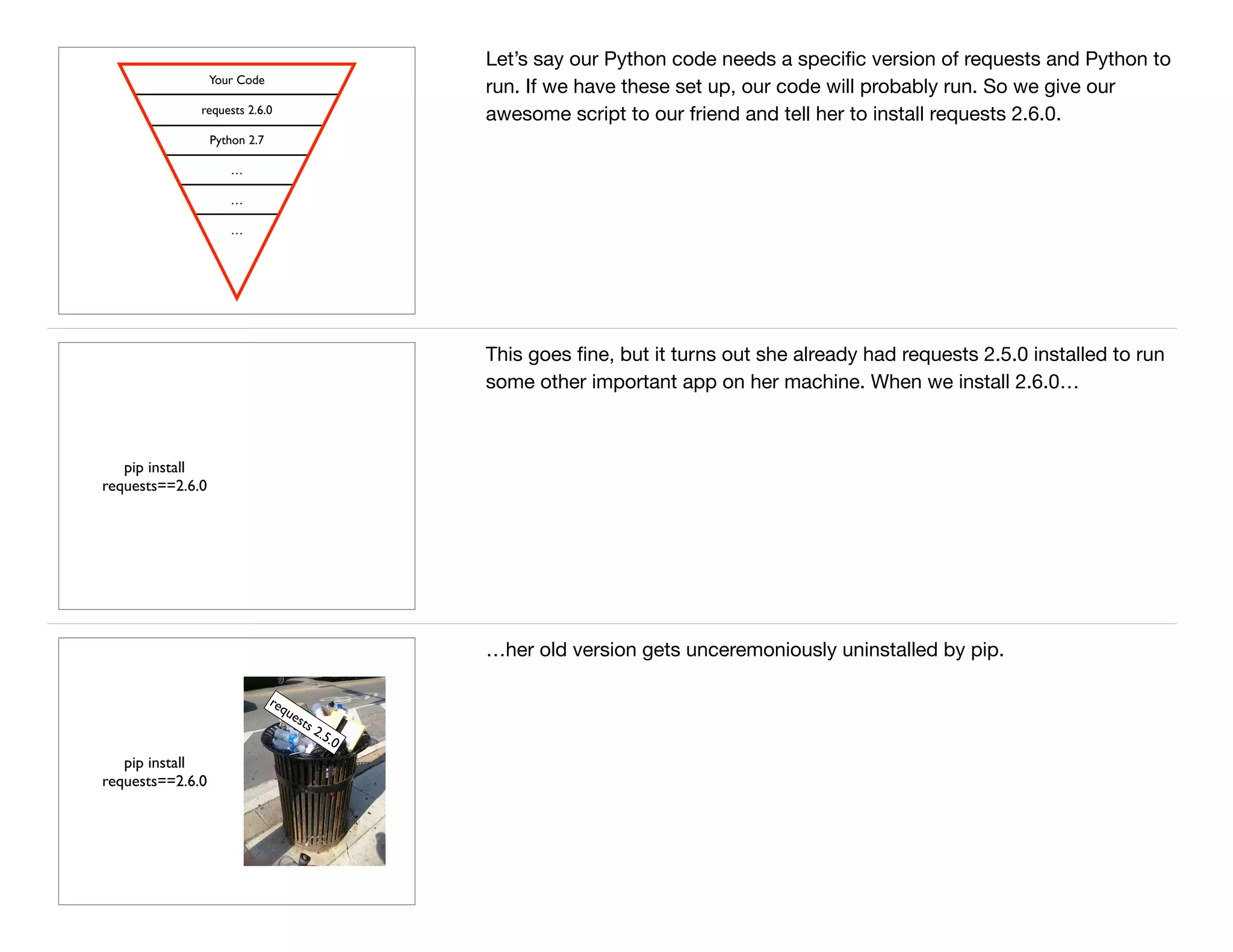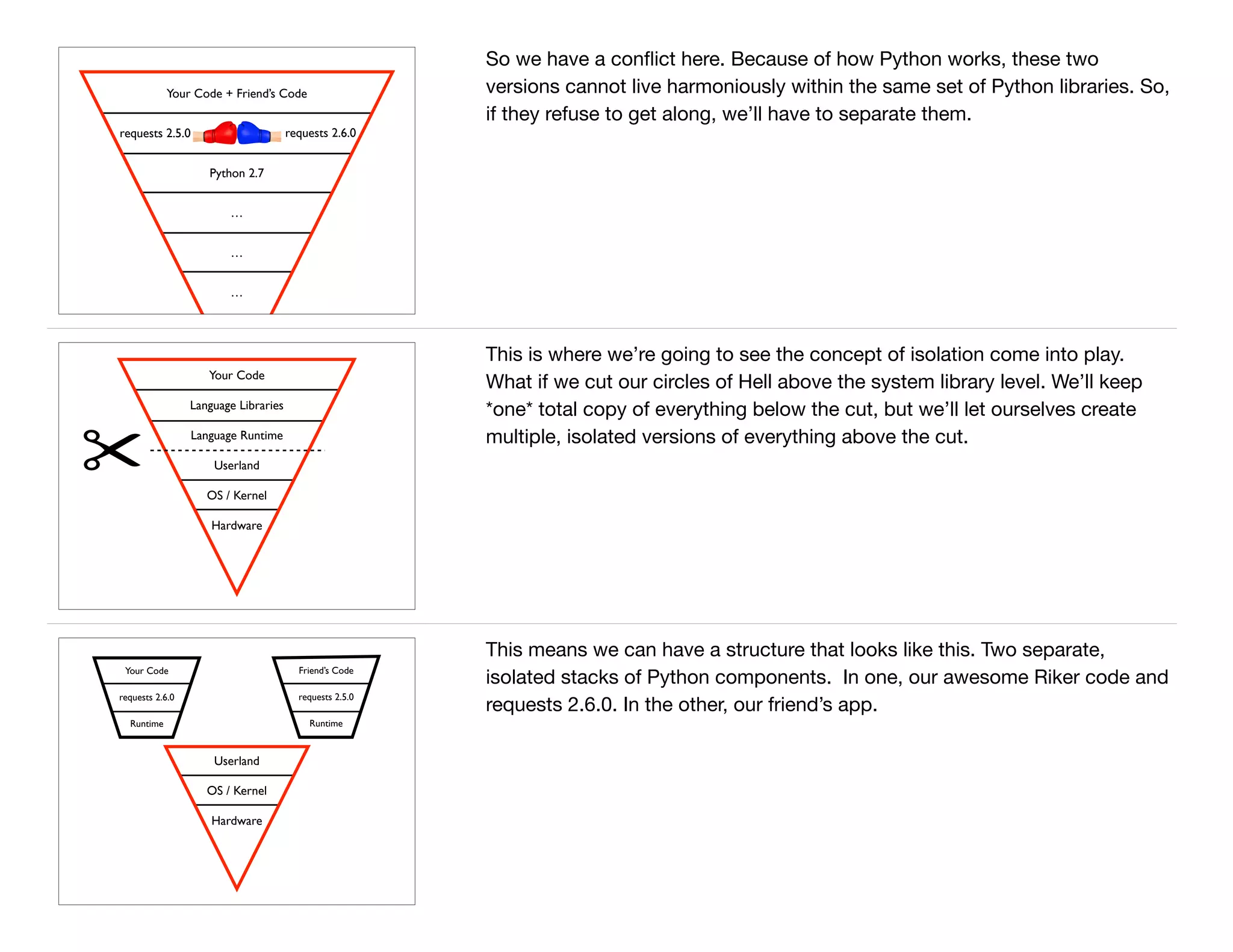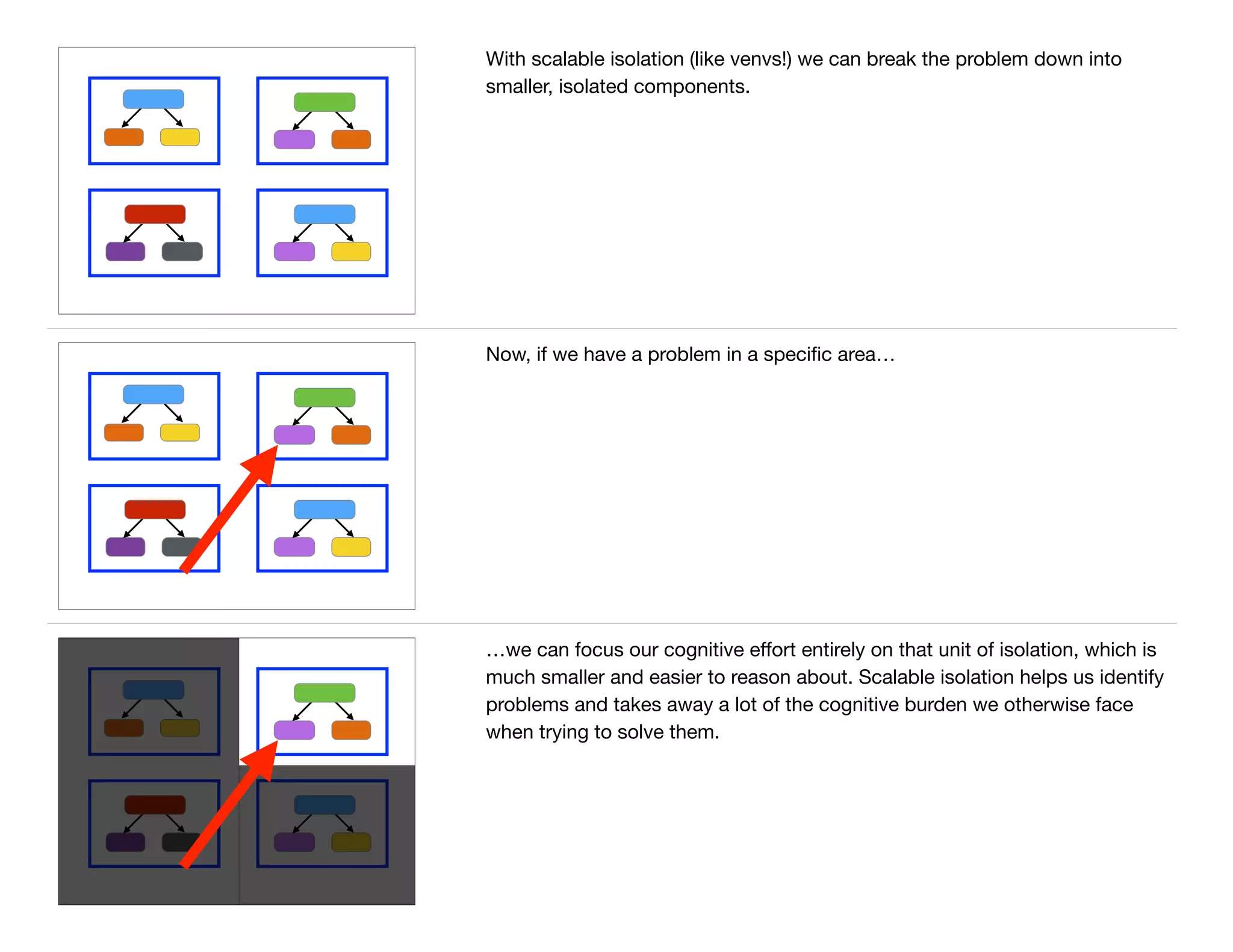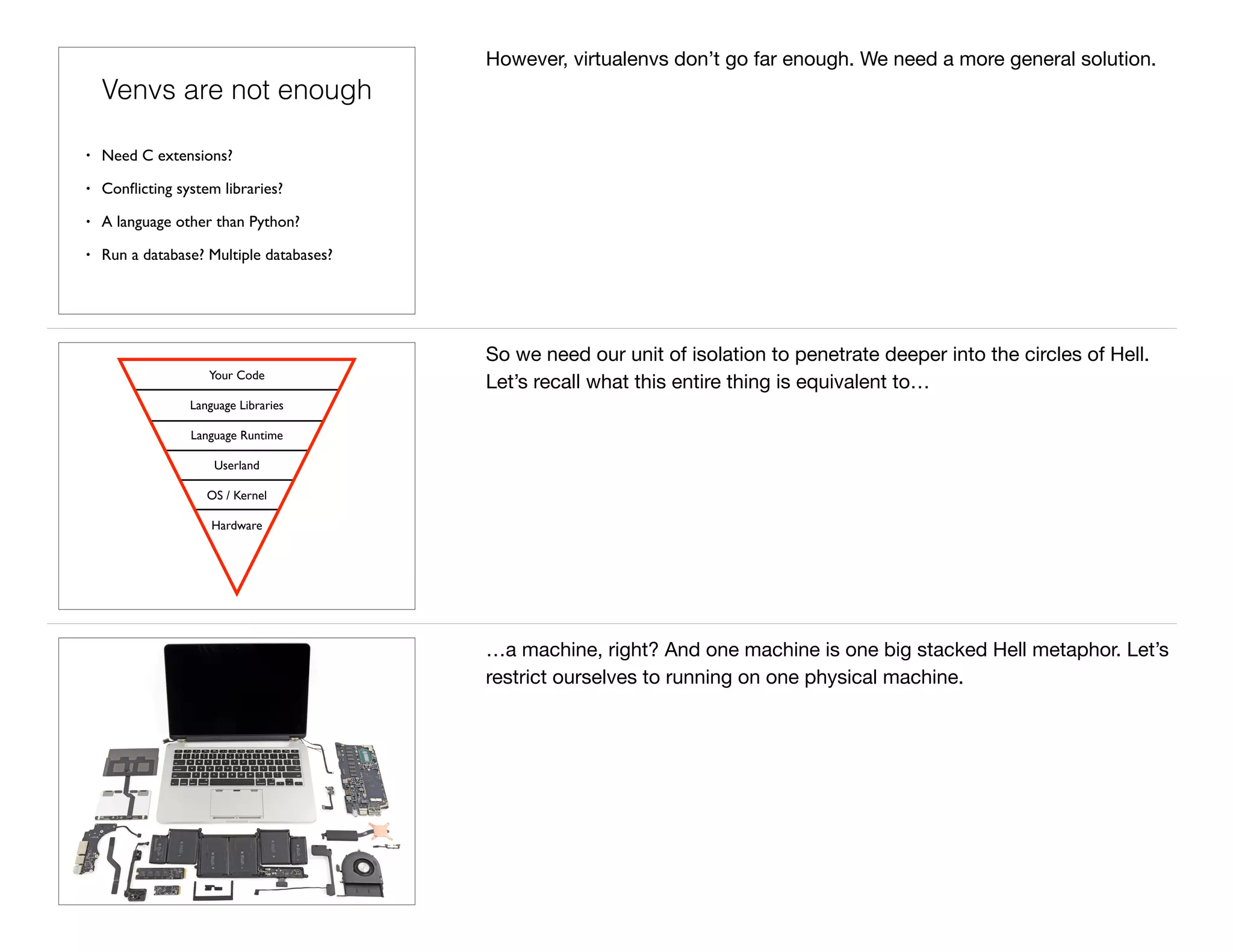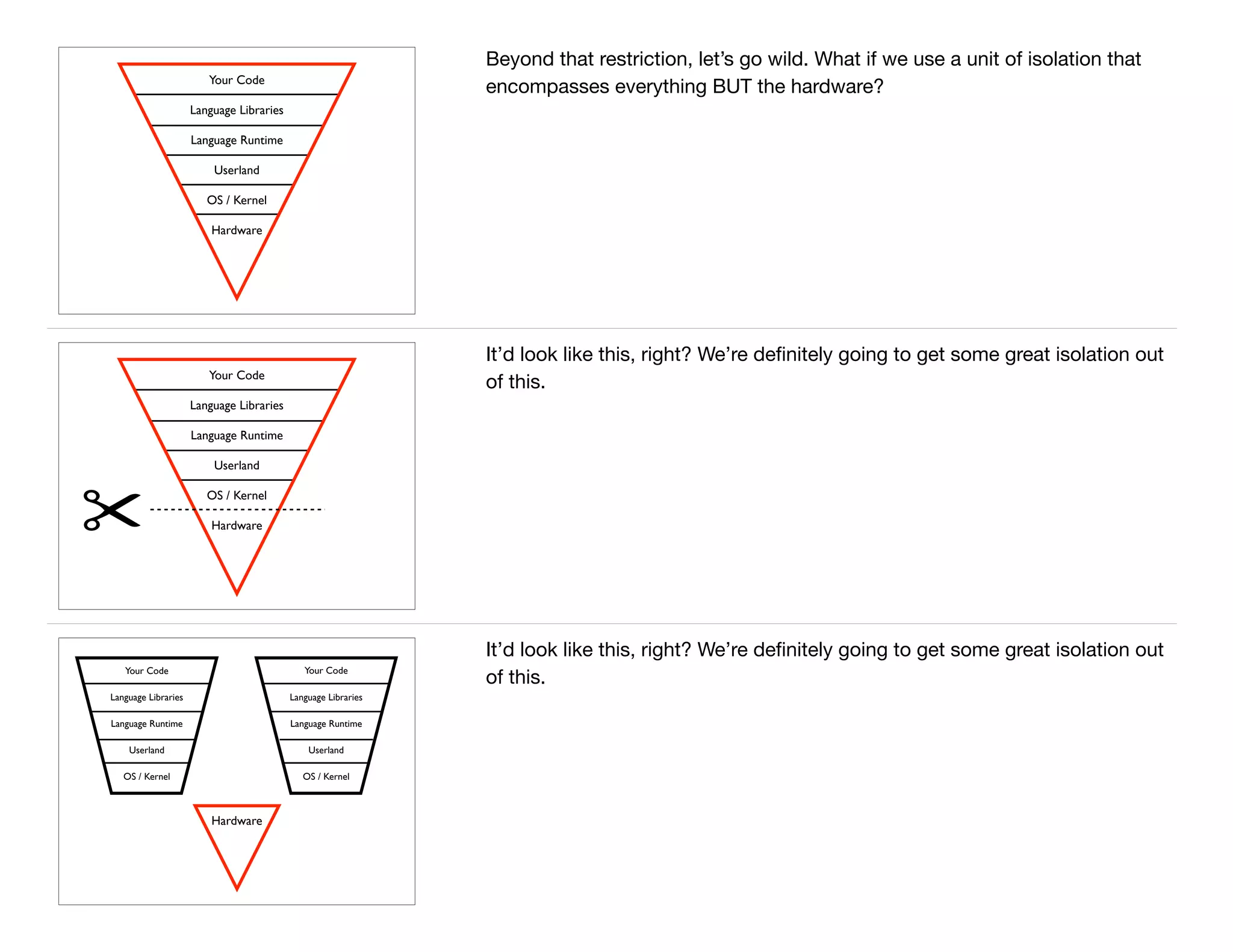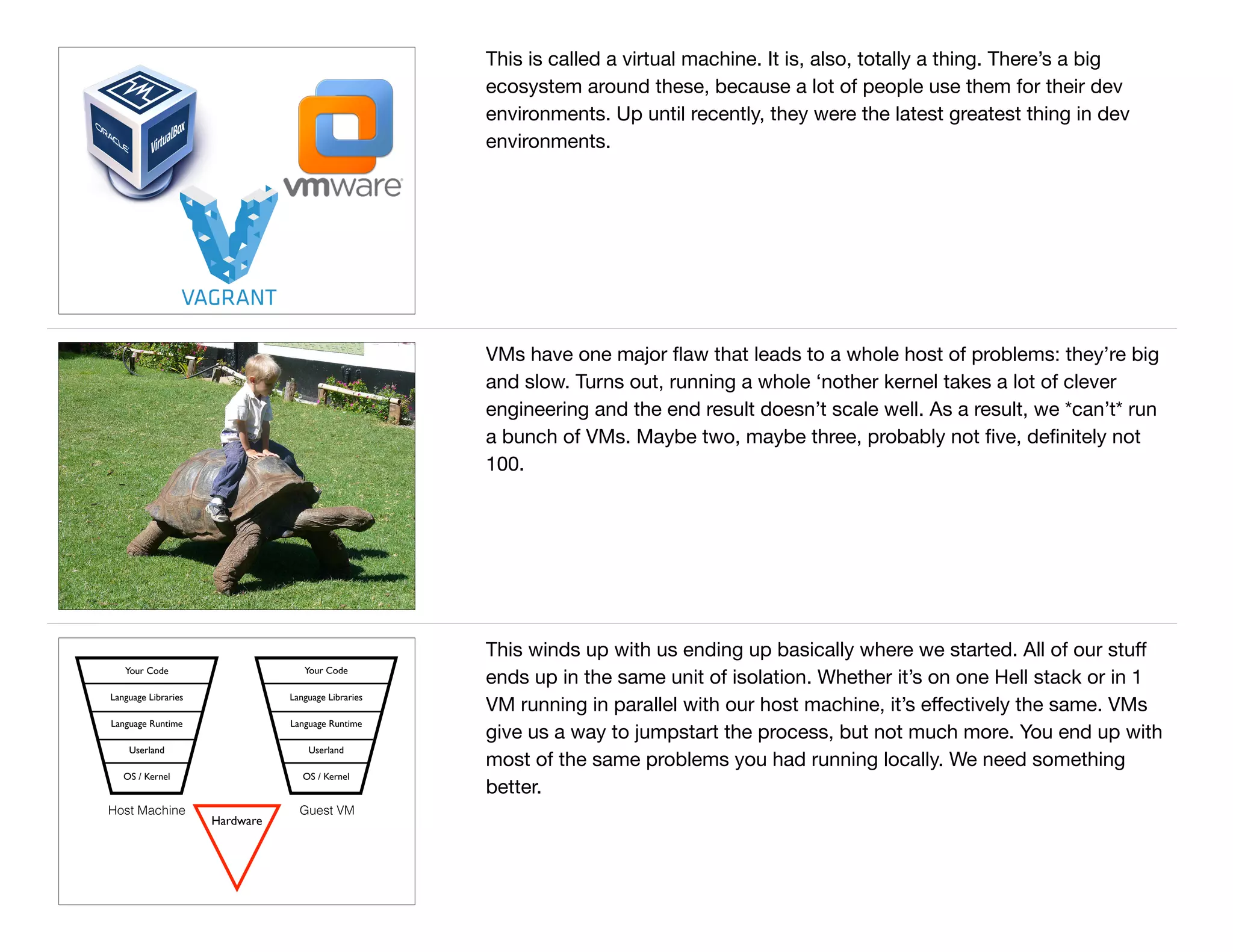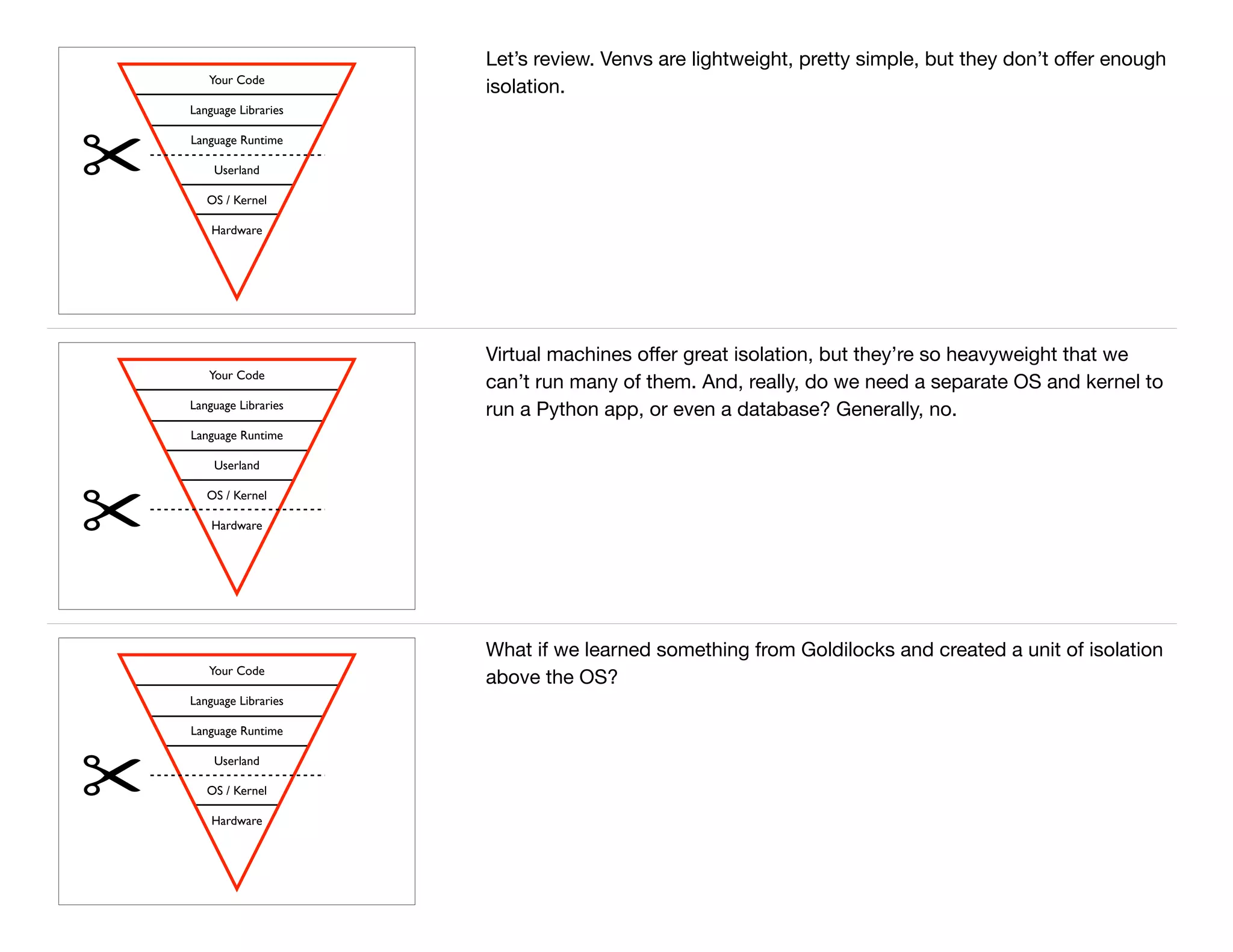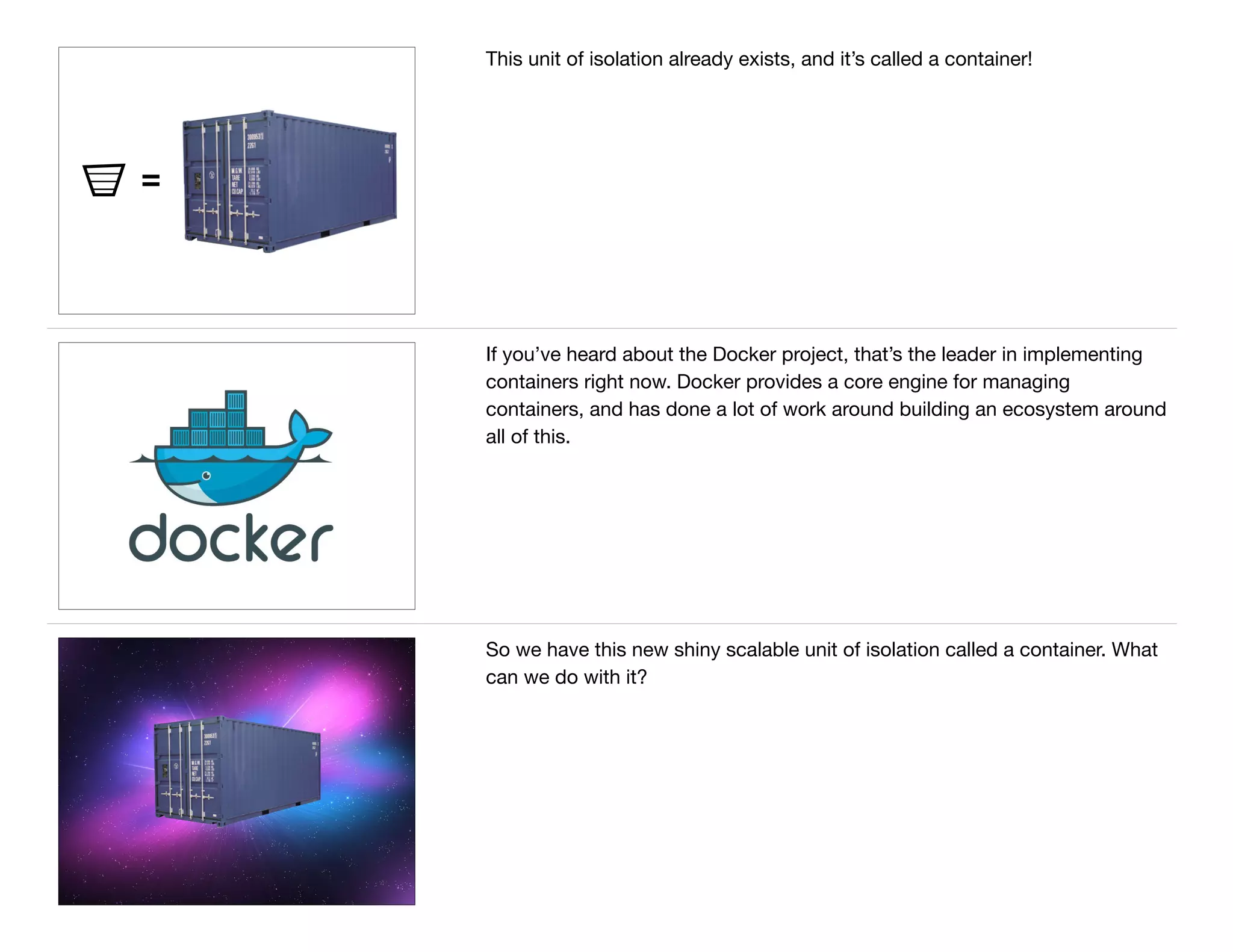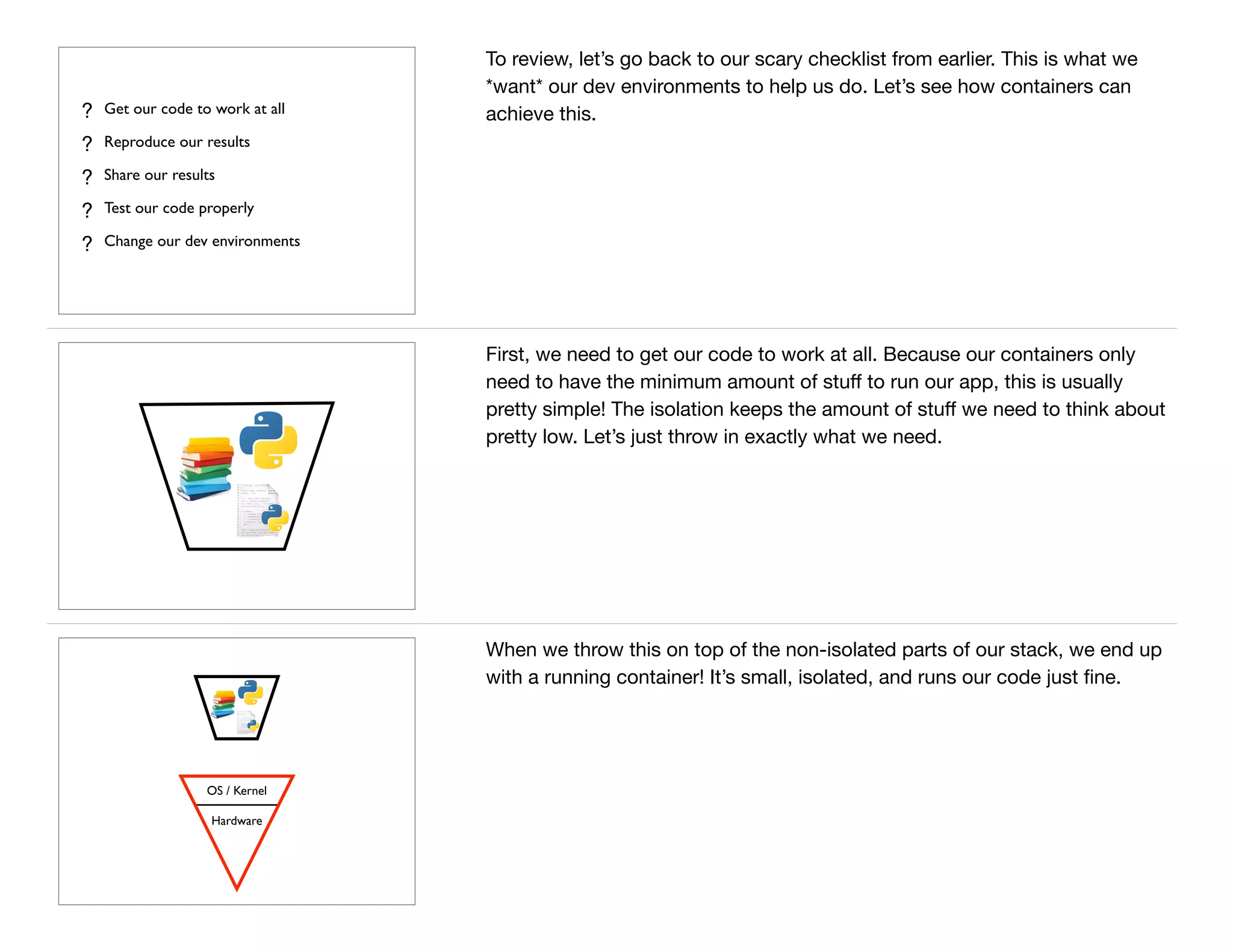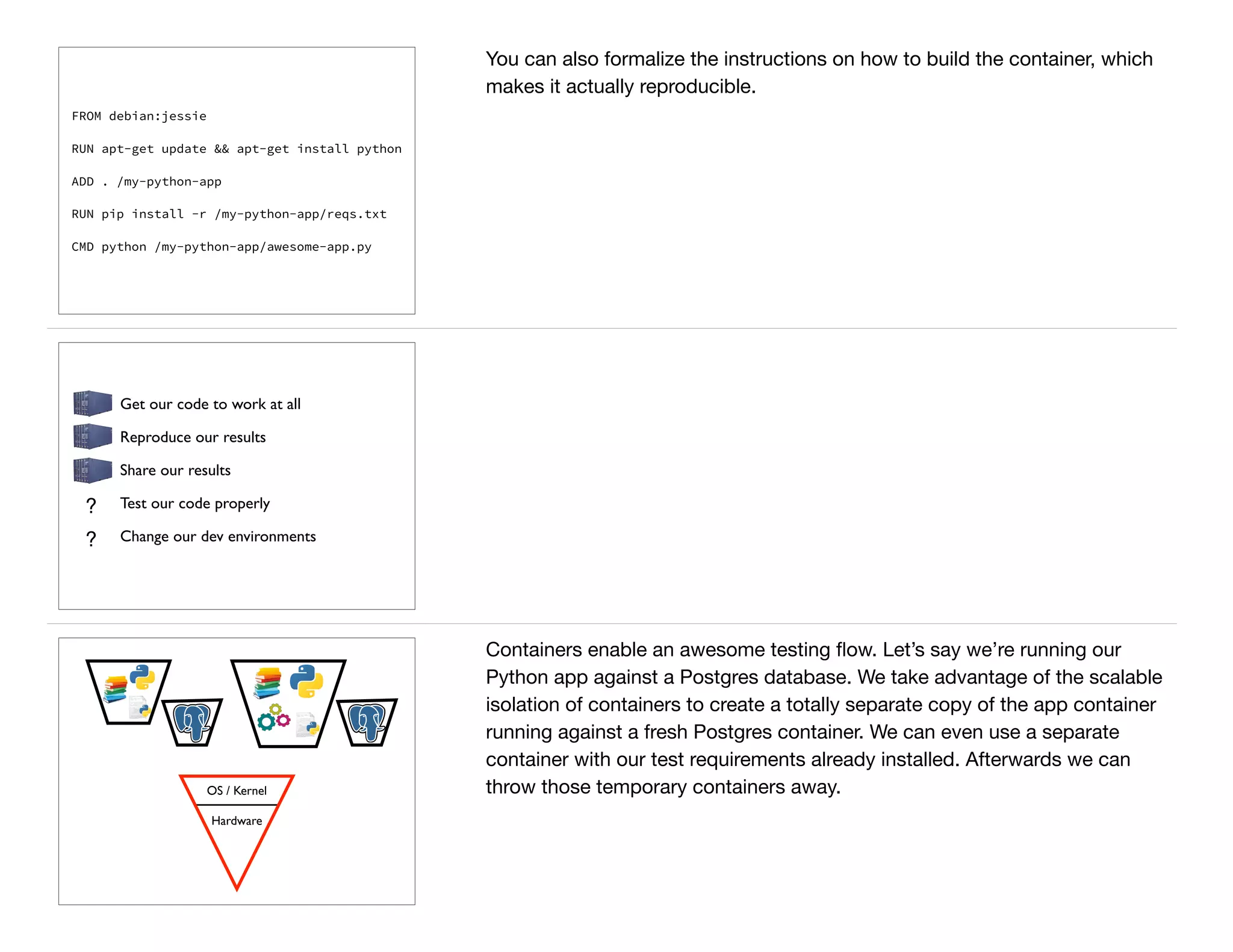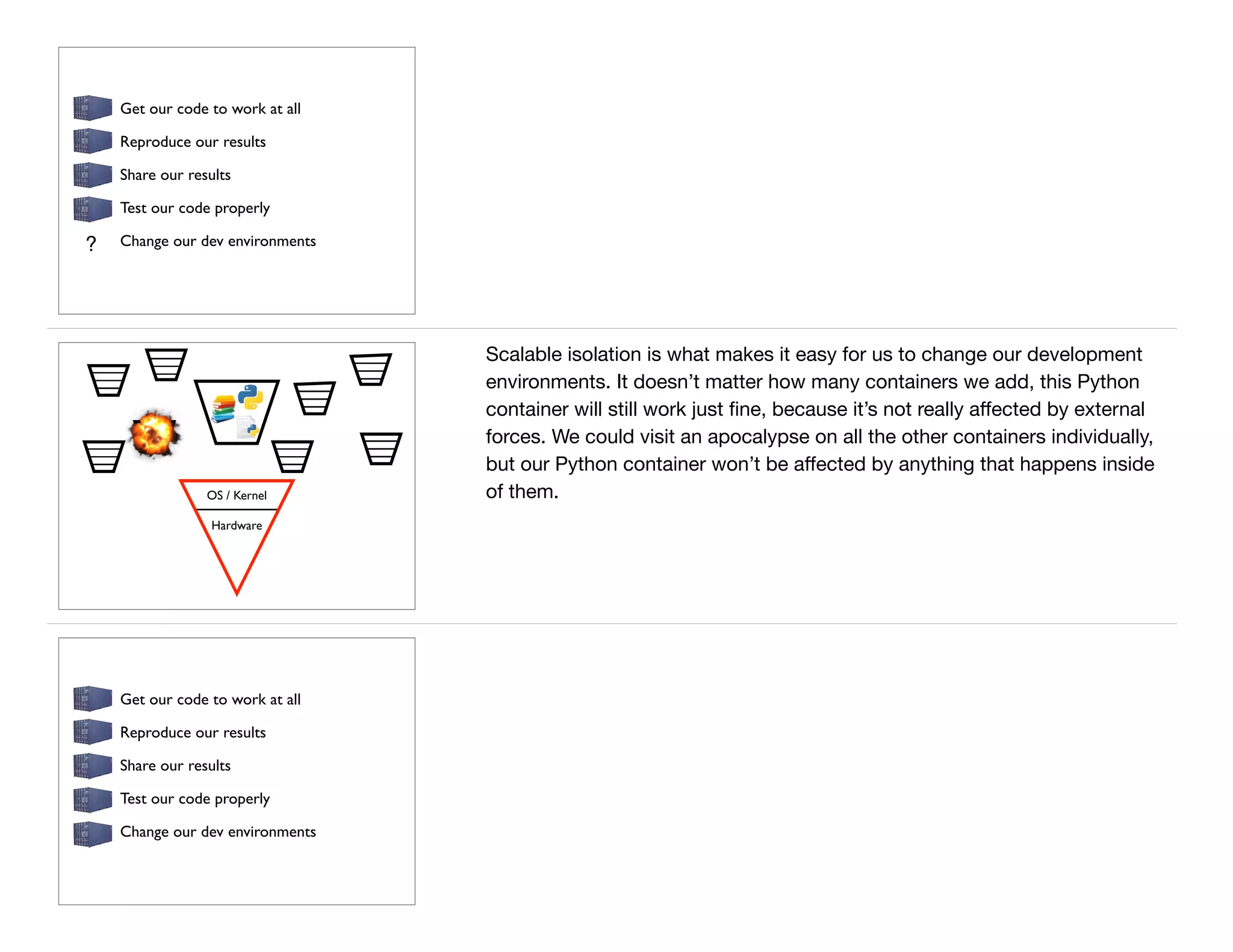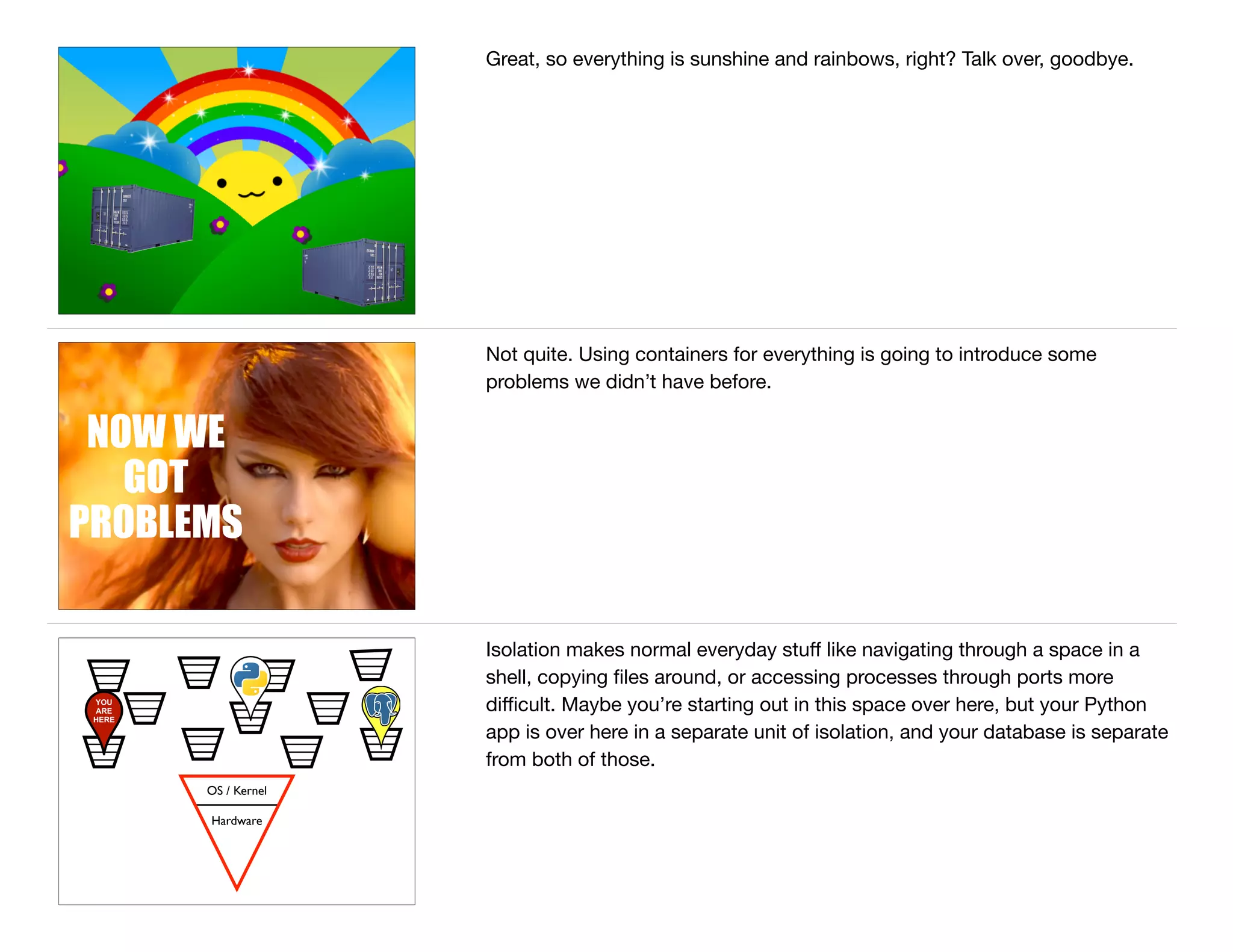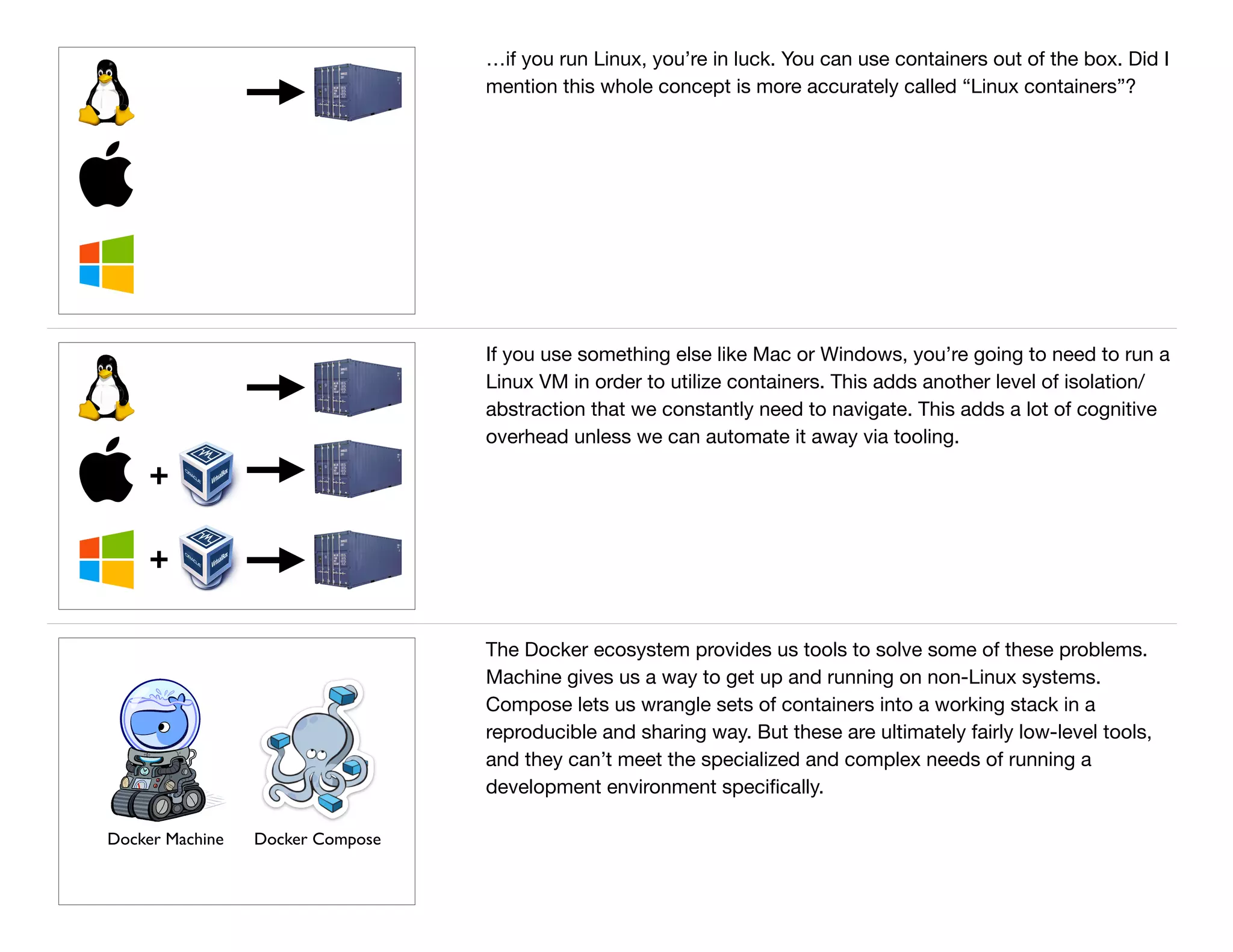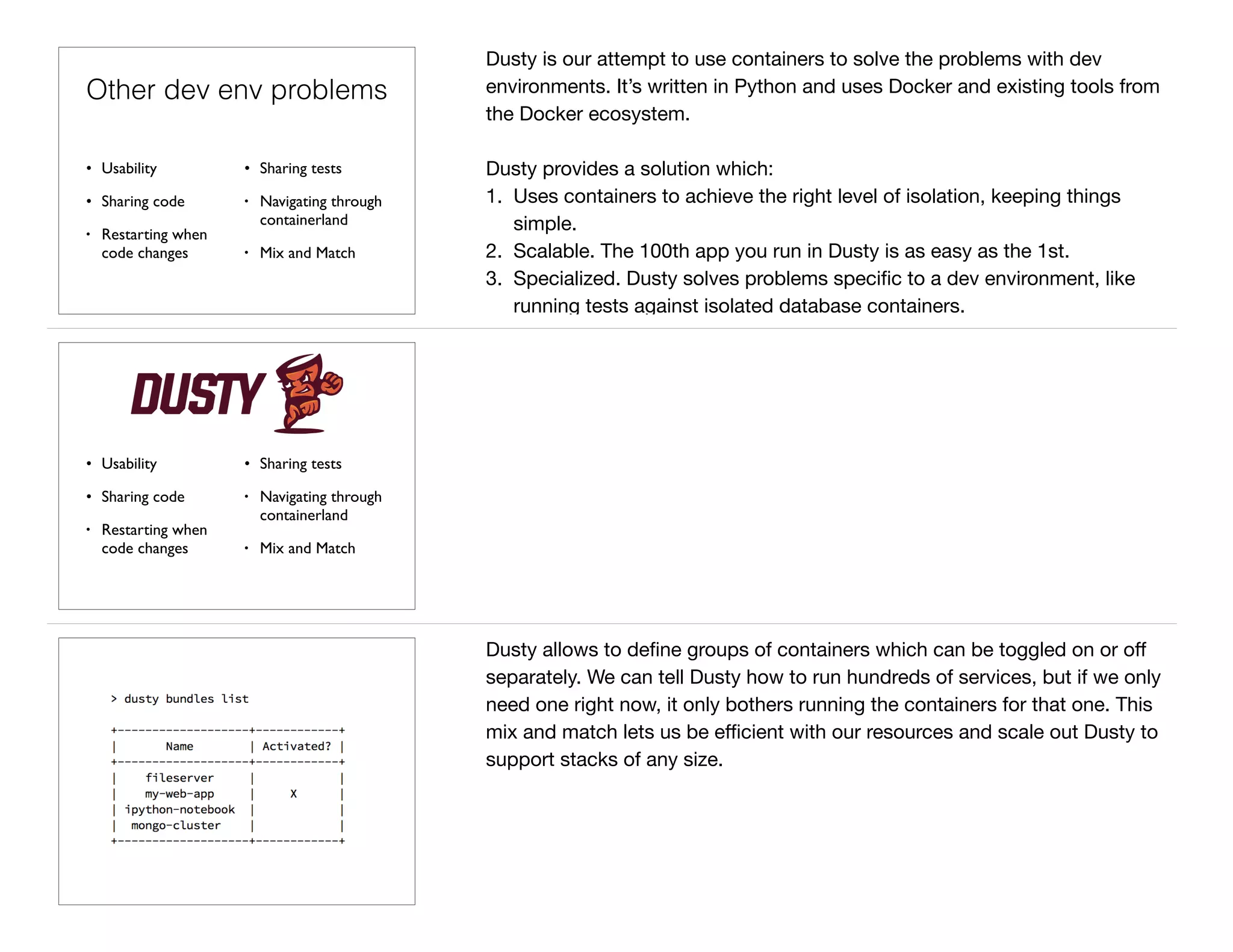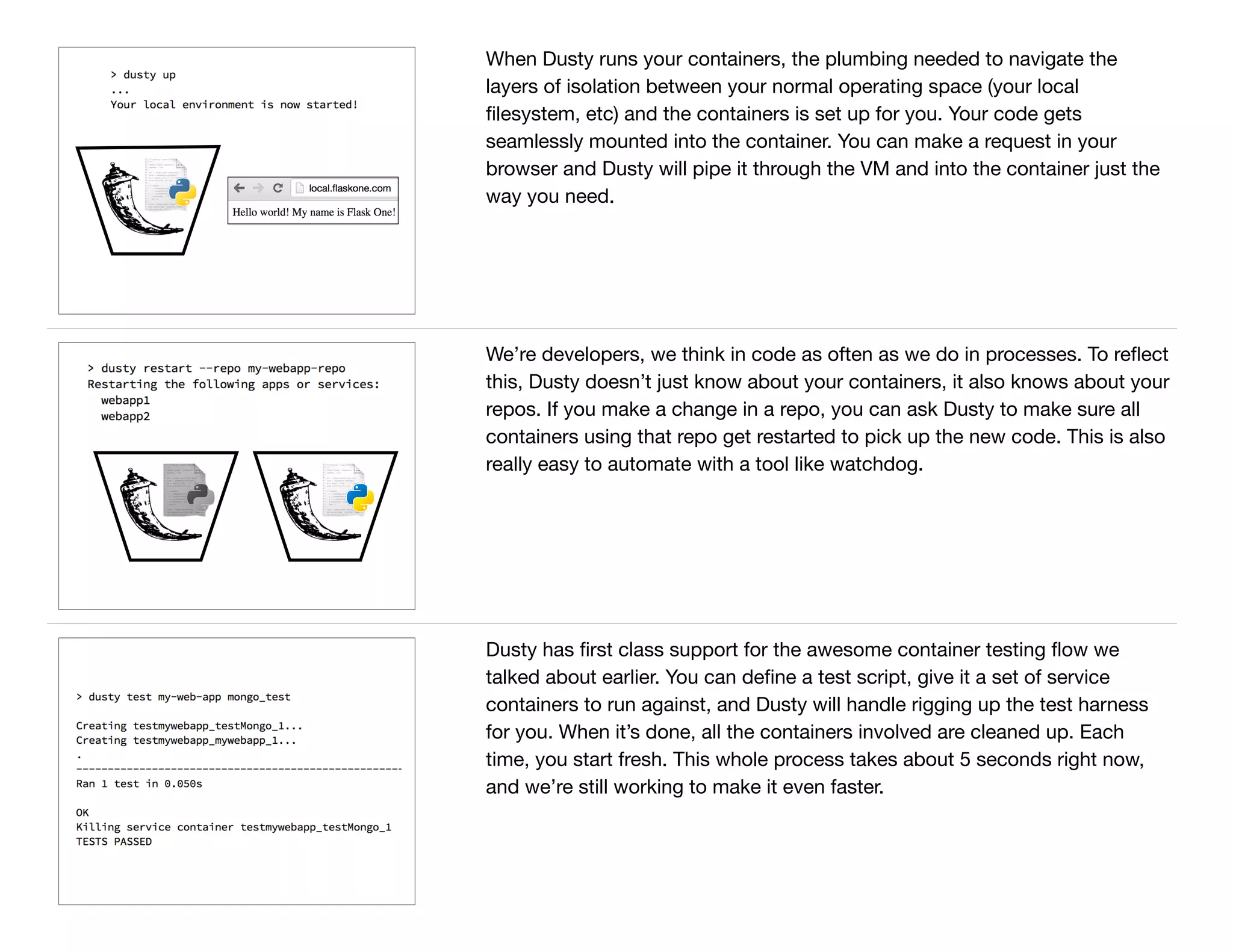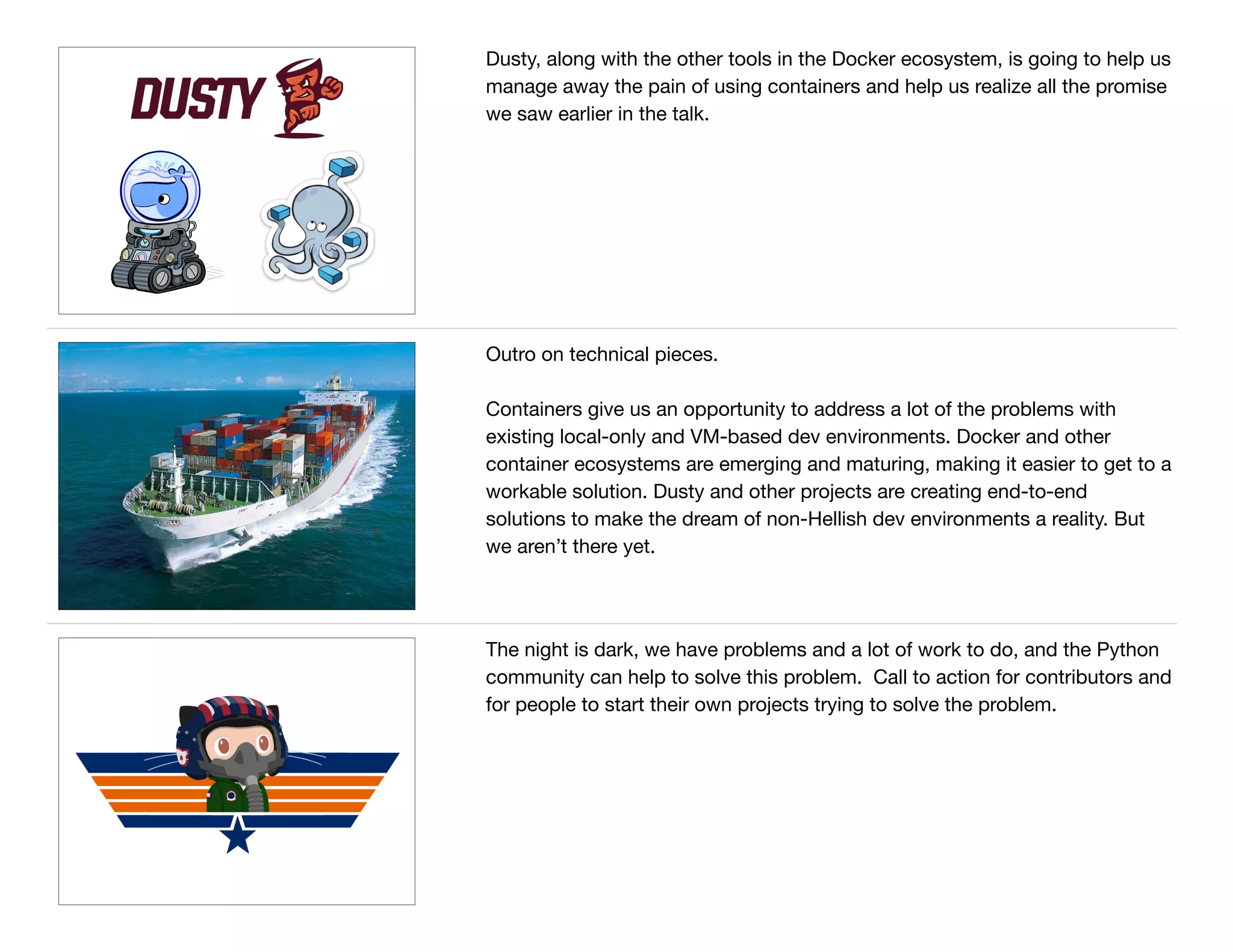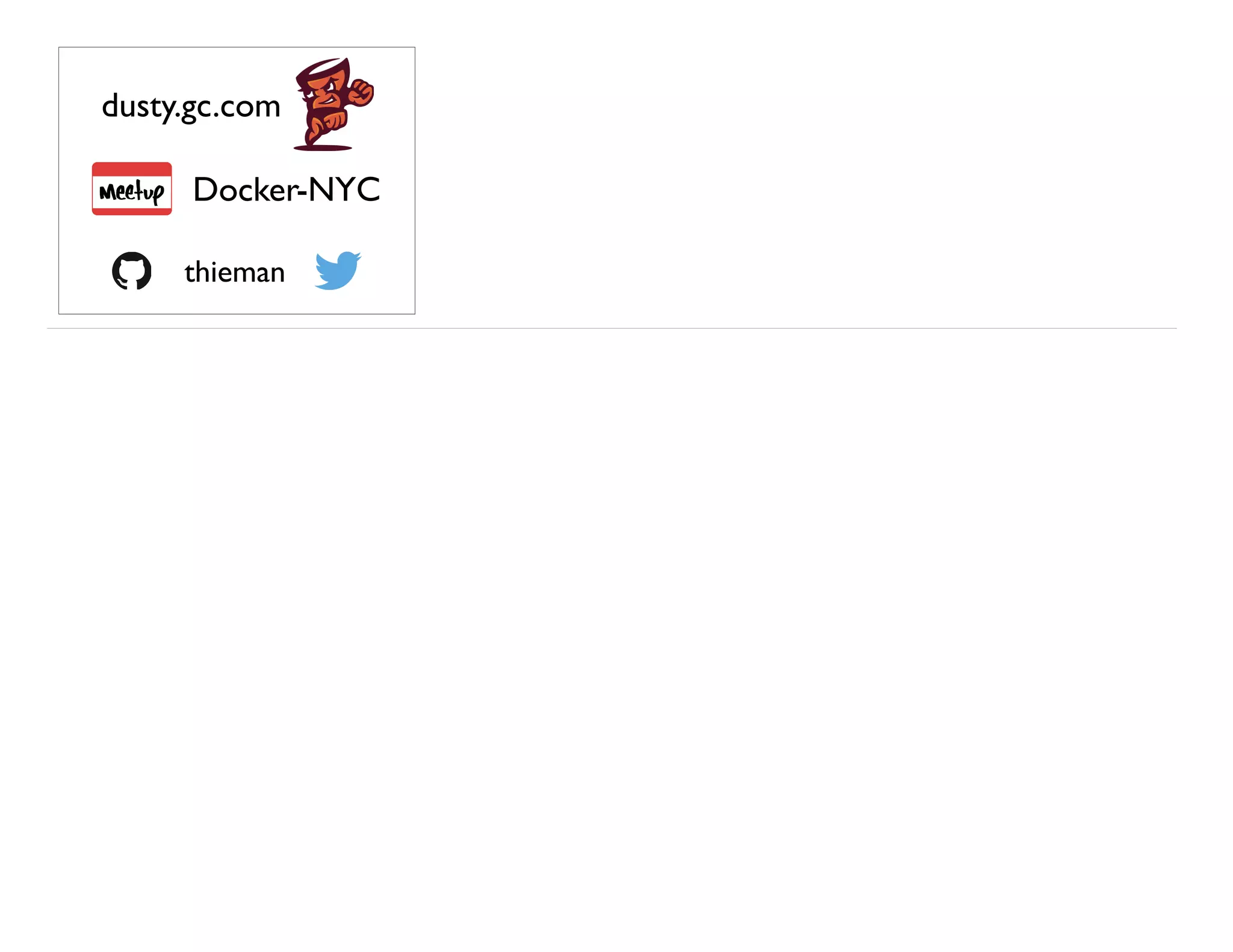The document discusses the complexities of development environments, emphasizing the importance of isolation through tools like virtual environments (venvs) and containers. It highlights the limitations of current solutions such as virtual machines and suggests that containers, particularly through the Docker ecosystem, provide a more scalable and manageable unit of isolation. The speaker introduces 'dusty', a framework that leverages these concepts to simplify development processes and improve collaboration, while recognizing ongoing challenges and the need for community contributions to enhance these tools.
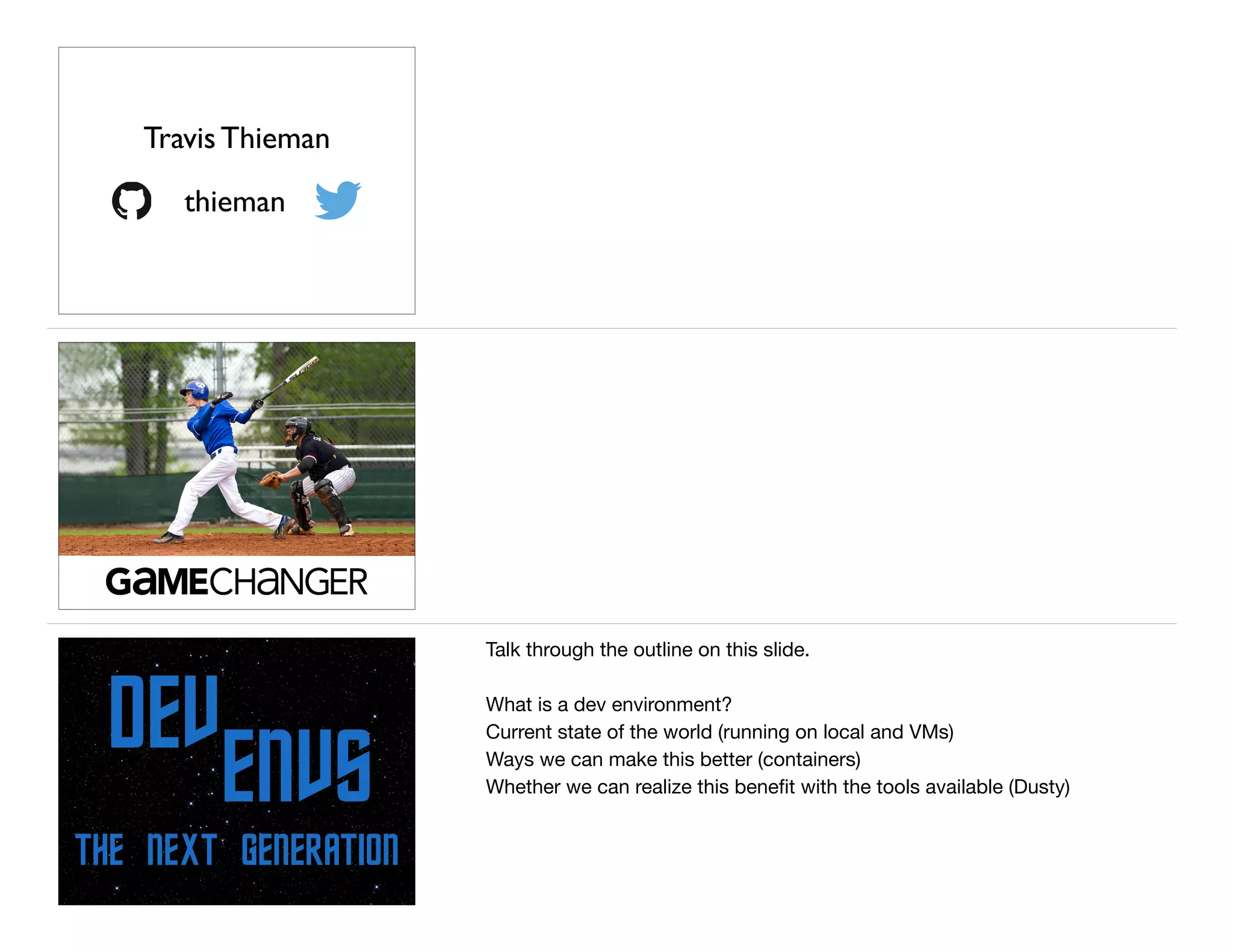

![Get our code to work at all
Reproduce our results
Share our results
Test our code properly
Change our dev environments
✗
✗
✗
✗
✗
Getting development environments right is hugely important, and the
consequences of screwing it up affect almost everything we do.
“[T]he alternative [to testing with SQLite] is not
testing at all because there is limited time for
testing and setting up a proper database for this is
so much more trouble.
The choices are not good test vs bad test.
They are test-with-issues vs. no test.”
- jbb555
Hacker News, August 4th, 2015
We are failing at managing the complexity of our dev environments.
This is from a Hacker News thread on testing code against SQLite instead of
the database you actually run in production.
Clearly we have a lot of work to do here.
Your Code
Language Libraries
Language Runtime
Userland
OS / Kernel
Hardware
Let’s start thinking through the problem by imagining a simple Python app
and getting it in the right environment to run correctly. If we want to share
that code or reproduce our results on another machine, we need to make
sure that our circles of Hell are compatible all the way down.
Most of the time, in Python-land, we are dealing with the three layers at the
top. In this example…](https://image.slidesharecdn.com/devenvironmentsthenextgeneration-150816223814-lva1-app6892/75/Dev-Environments-The-Next-Generation-3-2048.jpg)
